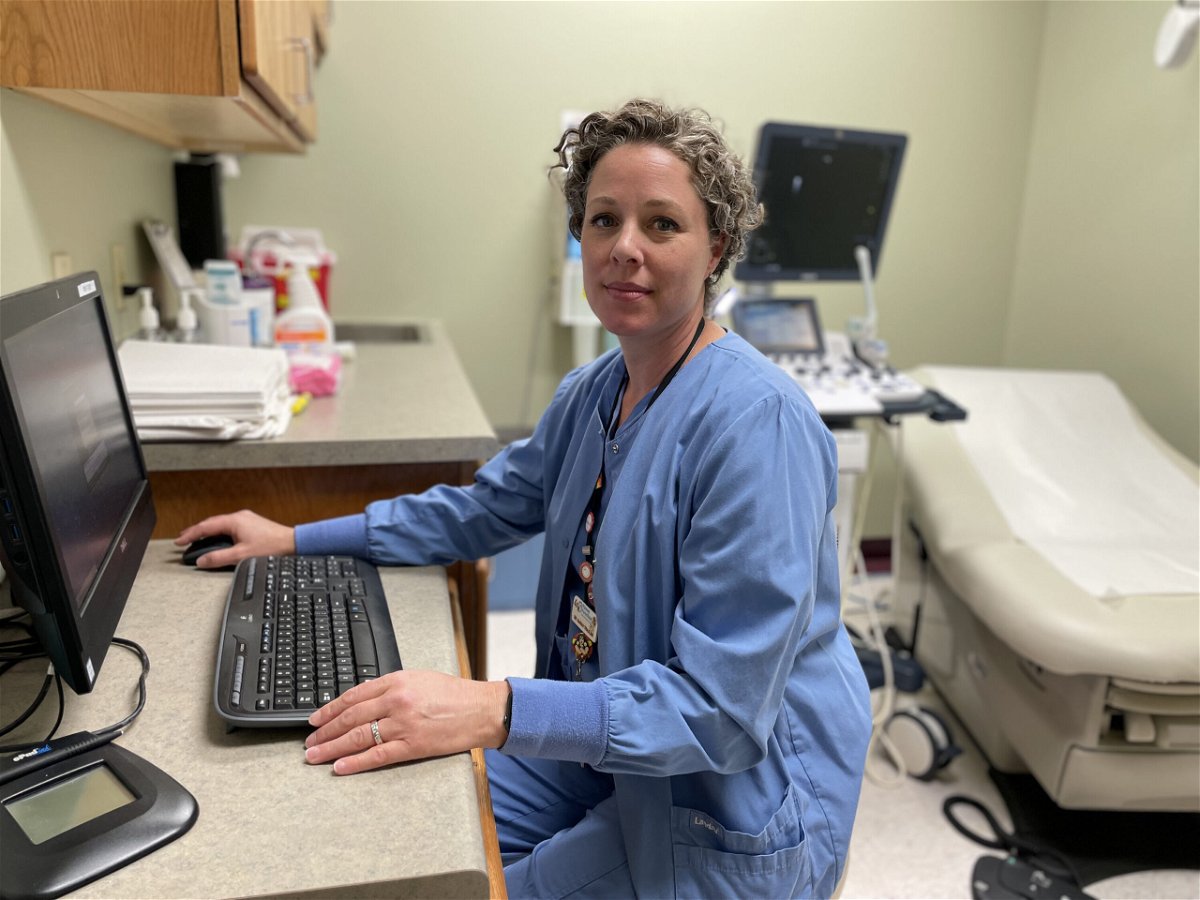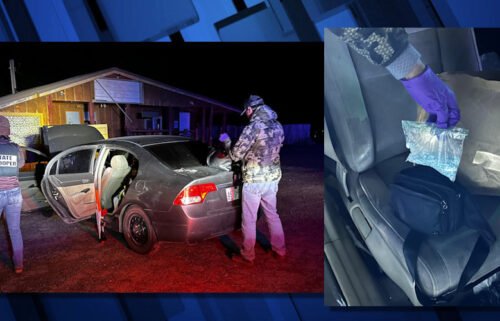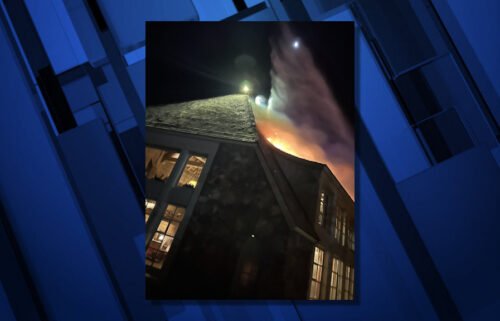24 hours in an America where Roe v. Wade barely hangs on

Dr. Sarah Traxler travels from Minneapolis to Sioux Falls twice a month.
By Julia Jones and Kyung Lah, CNN
Dr. Sarah Traxler’s “Sioux Falls day” starts early. On this day, as it has been twice a month for the last seven years, Traxler is the only abortion doctor in South Dakota.
By 6:30 a.m., she’s at the airport in Minneapolis, headed to Sioux Falls. And by the day’s end, she’ll return.
She makes this trek because no doctor in the state is willing or able to perform the procedure. “If there’s nobody else willing to do it, this is what we feel like we need to do in order to give patients access to that care,” she says.
This is the reality of abortion access in one of the most restrictive states in the United States, even as Roe v. Wade remains the law of the land. The 1973 court decision ruled abortions were constitutionally protected up until about 23 weeks, when a fetus could be able to live outside the womb.
But the draft Supreme Court opinion leaked this month suggests even this limited access will end almost immediately in half of the country when the justices issue the expected official decision this summer. Twenty-six states have laws indicating they intend to ban abortions if Roe is overturned or significantly weakened, according to the Guttmacher Institute, and 13 states, including South Dakota, have “trigger laws” to ban abortion as soon as Roe is no longer in effect.
Roe is already barely holding on in states like South Dakota, Traxler says. If the law is reversed, the Supreme Court would be handing down an “unjust” verdict for women there, she says.
“It’s heartbreaking that this is not going to be available to them anymore. I don’t think that abortion access, healthcare and bodily autonomy should be up for debate,” she says.
But on this day, the decision is still just a draft, and Traxler has work to do in Sioux Falls.
The flight is less than an hour. A man in a black suit greets Traxler at the arrivals gate: her security detail. Charged with taking her to the clinic safely, he drives new routes each time to avoid being tracked down by anti-abortion militants and to skirt potential violent attacks.
Eleven patients await Traxler at the Planned Parenthood clinic. “They come from all walks of life,” says Traxler. They are women who are already mothers; who are pregnant for the first time; who are of varying ages.
This will be the first of two state-mandated visits for each of them.
At their first appointment, women are required to undergo an ultrasound, be read government-mandated information that providers say is medically incorrect and be offered alternative options to abortion. Each patient’s file then receives a time stamp.
Seventy-two hours after that stamp, and not a minute earlier, Traxler can perform the procedure or administer the pills.
Around 10 a.m., Traxler, keenly aware of the ticking clock, walks briskly into the clinic and throws on her scrubs. “We want to get them seen, get their ultrasounds, get their education in, so that we can time stamp their visit,” she says.
The two-visits rule is a cumbersome hurdle, Traxler says. But following those rules allows this sole clinic in the state to provide safe, legal access to abortions.
Watering down Roe
South Dakota hospital restrictions make it virtually impossible for local physicians to prescribe abortion pills or perform any abortion procedures and maintain their admitting privileges.
“(Local doctors) either won’t because it’s against their beliefs or they don’t feel safe doing it because of the atmosphere and the climate in South Dakota,” says Planned Parenthood center manager Misty, who asked to be identified only by her first name out of concern for her safety.
And telemedicine appointments for medication abortion, which the Food and Drug Administration allowed to take place during the Covid-19 pandemic, are not permissible in South Dakota.
There are also strict rules on any clinic providing abortions, including obtaining an “abortion facility” license, according to South Dakota law. Other regulations “stipulate the size of procedure rooms (115 square feet) and recovery rooms (45 square feet) and dictate the types of flooring and lighting that may be used,” Planned Parenthood says.
The restrictions mean clinics and doctors simply cannot function in South Dakota, Misty says. It’s why all other abortion clinics in the state have shut down, leaving some patients to travel four or five hours each way to access a willing doctor, she adds. One patient traveled a total of 1,300 miles, round trip, according to Misty.
“We’re here, we’re functioning, we’re seeing patients, abortion patients. Our schedules fill weeks out. But that doesn’t mean that it’s accessible to everybody who needs it. Absolutely not,” Misty said.
A pledge from the governor
These limits on abortion are hailed by Gov. Kristi Noem, a first-term Republican who has pledged to make South Dakota the most anti-abortion state in the country.
South Dakota’s trigger law has been in place since 2005, and would immediately outlaw abortion except in extreme cases when the woman’s life is in jeopardy. But Noem has championed restrictions while she has been in office.
In March, Noem signed a bill that would require pregnant women to make at least three separate trips to a clinic to obtain abortion medication — though the law won’t take effect until a pending federal court case is decided.
Endorsed by former President Donald Trump for her reelection bid this year, Noem is widely expected to serve a second term.
When the draft of the Roe v. Wade decision was leaked, Noem tweeted she would “immediately call for a special session to save lives” if the law were overturned. And earlier, in her January State of the State address, Noem made clear that South Dakota is eager to act should Roe end, with state laws “ready to protect every unborn child in South Dakota.”
If the Supreme Court decision follows the leaked draft, Traxler’s Sioux Falls days will be done.
“If the decision comes tomorrow, we would not be able to complete their visit 72 hours later, we would have to call all of those patients and let them know that they can’t be seen and they need to go somewhere else,” she says.
Traxler’s efforts at that time would be to help South Dakota women travel to states that would still allow legal abortions through Planned Parenthood.
At 3 p.m. local time, Traxler’s day is winding down. She’s seen the last of her patients and has warned all of them about what the draft opinion means for their abortion.
The same security guard is waiting outside. Traxler changes out of her scrubs and grabs her tote bag to catch her flight back to Minnesota.
In 72 hours, she hopes she will make this journey again to see her patients, and for as long as the Supreme Court will let her.
The-CNN-Wire
™ & © 2022 Cable News Network, Inc., a WarnerMedia Company. All rights reserved.



